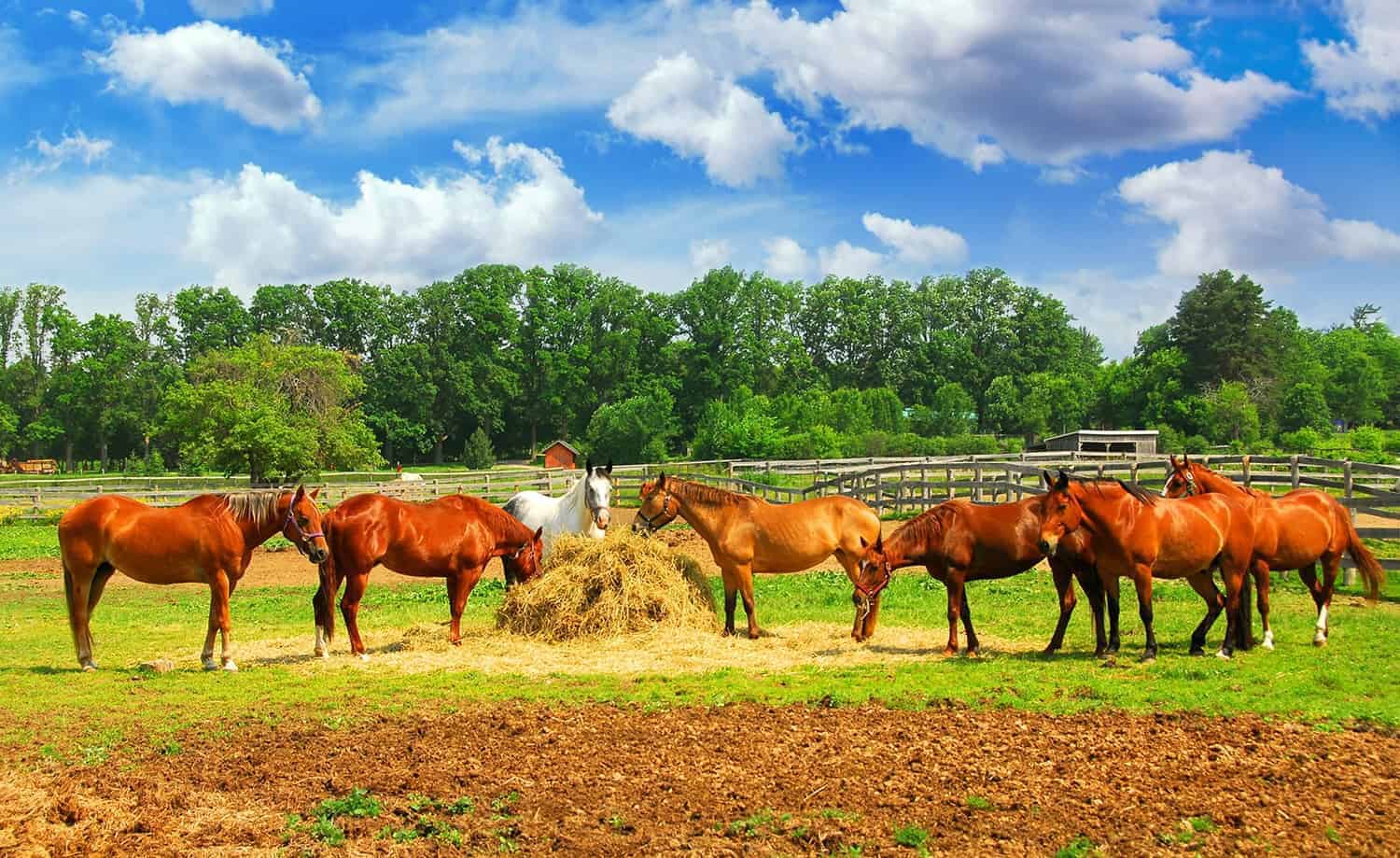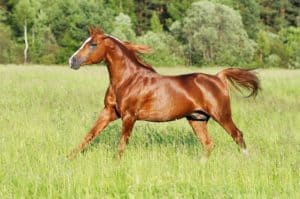Tips for Feeding Horses in a Group
- Posted by Clair Thunes, PhD

Q. My horses are happiest living together as a herd, and as an at-home horse keeper, I’m always looking for ways to keep my horse chores easy and efficient. My “boss” horse at feeding time is also my easiest keeper, so he carries extra weight while the others are a little leaner than I’d like. Do you have any tips or tricks you could offer about feeding horses in group situations, and can you recommend one kind of feed is best for horses of varying ages and activity levels?
—M.B., via email
A. Managing horses in groups has numerous benefits for their behavioral health. However, as you have found, it has its own set of management challenges. I would recommend initially spending some time observing your horses at feeding time to see how they interact, what the pecking order is, and how long they each take to eat. This will give you some data to work with to develop a management plan
Create a free account with TheHorse.com to view this content.
TheHorse.com is home to thousands of free articles about horse health care. In order to access some of our exclusive free content, you must be signed into TheHorse.com.
Start your free account today!
Already have an account?
and continue reading.

Written by:
Clair Thunes, PhD
Related Articles
Stay on top of the most recent Horse Health news with













2 Responses
great article, thank you for sharing, pauline
This was most interesting and helpful.